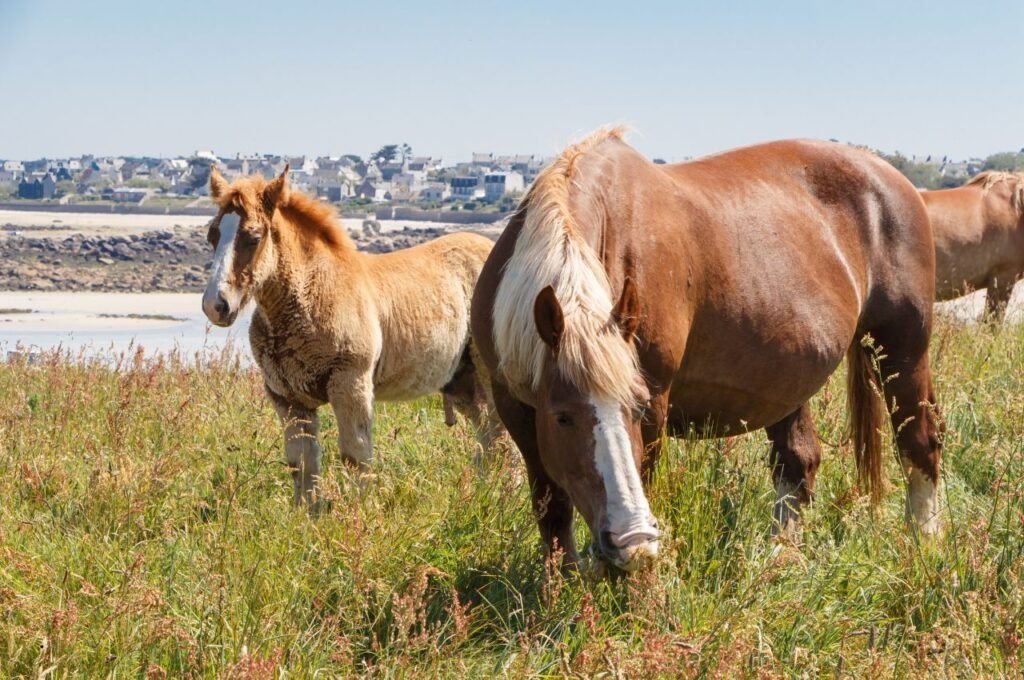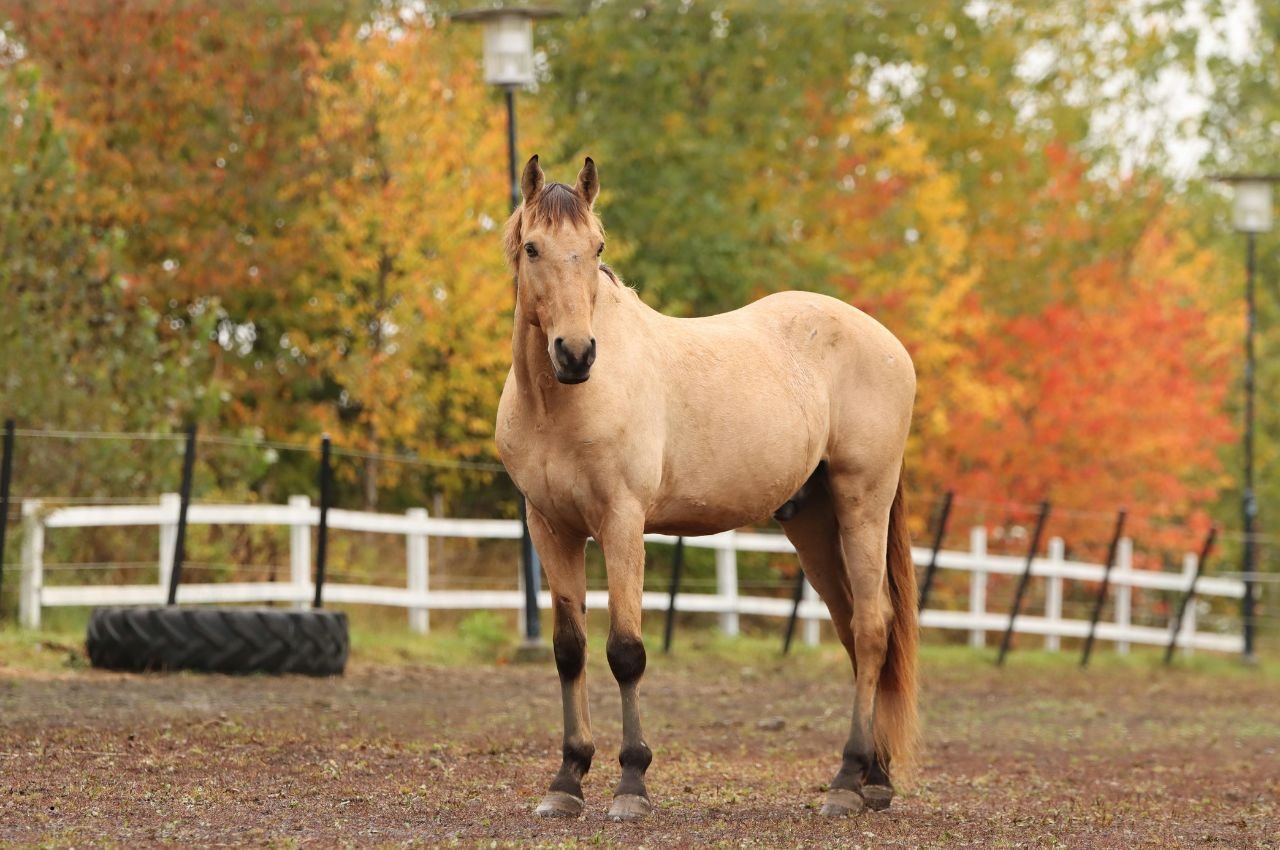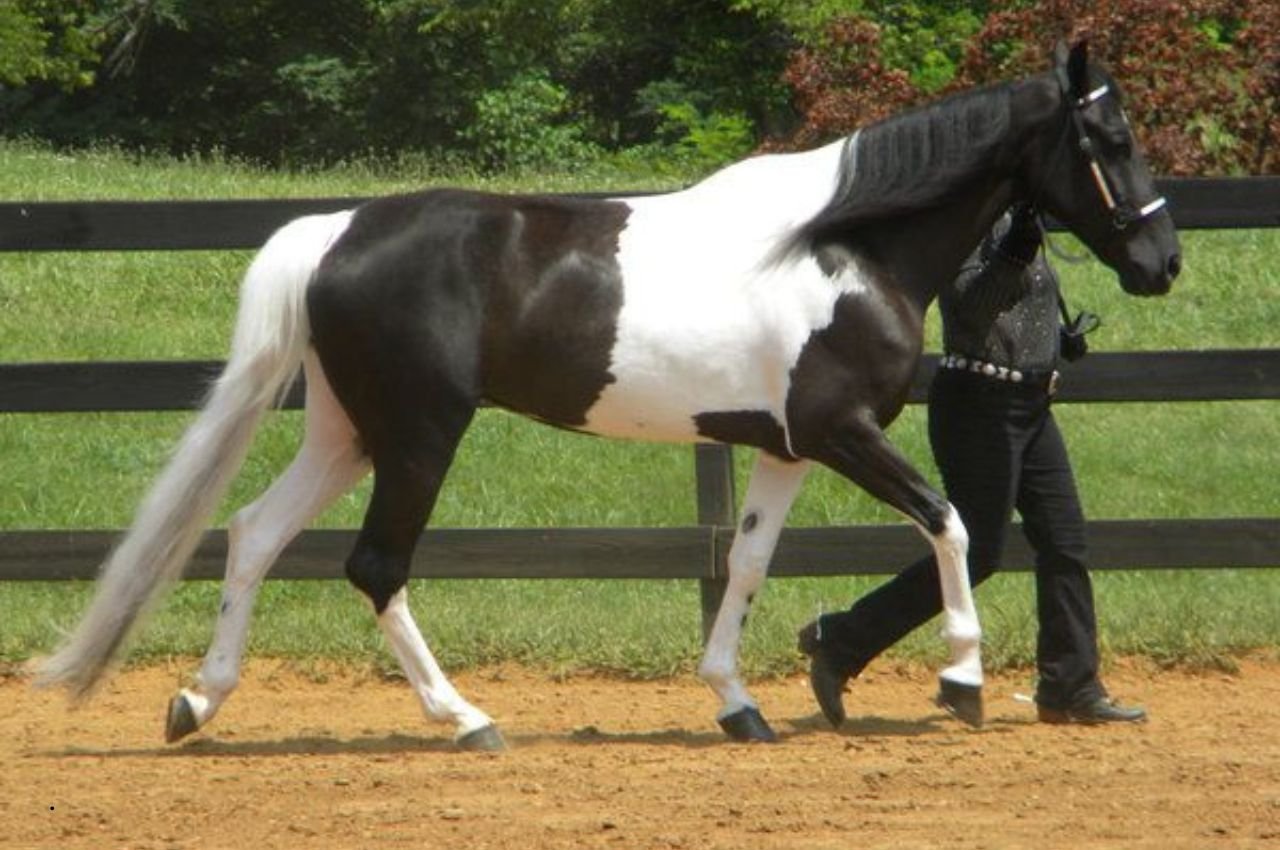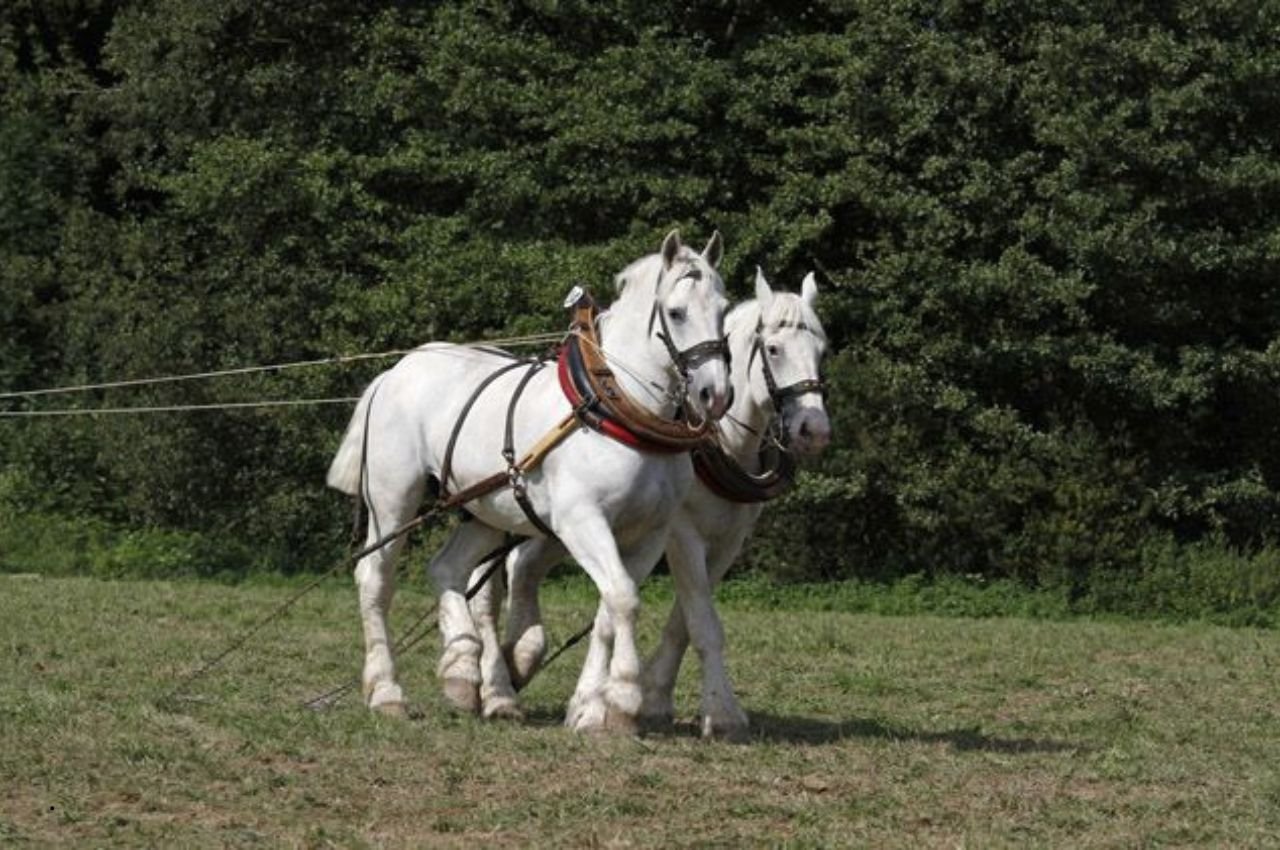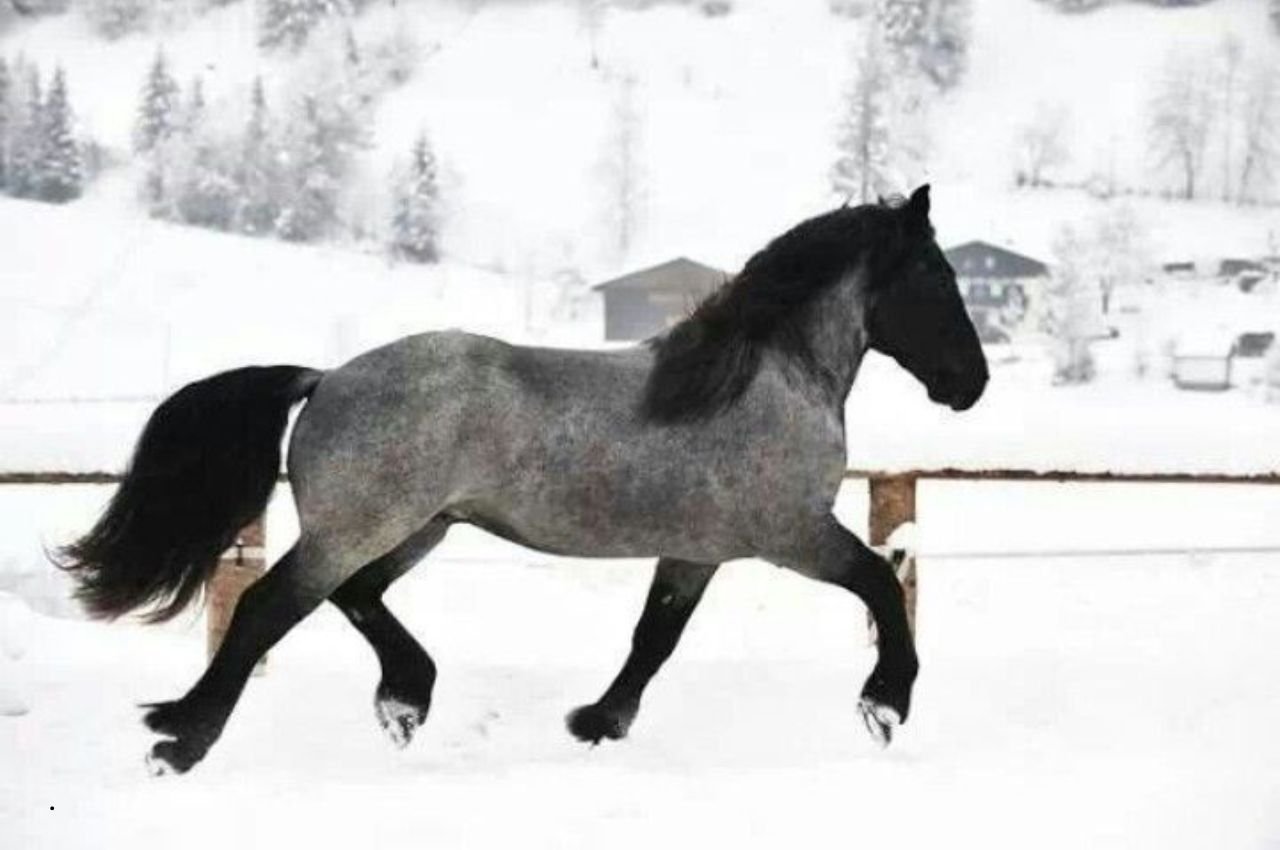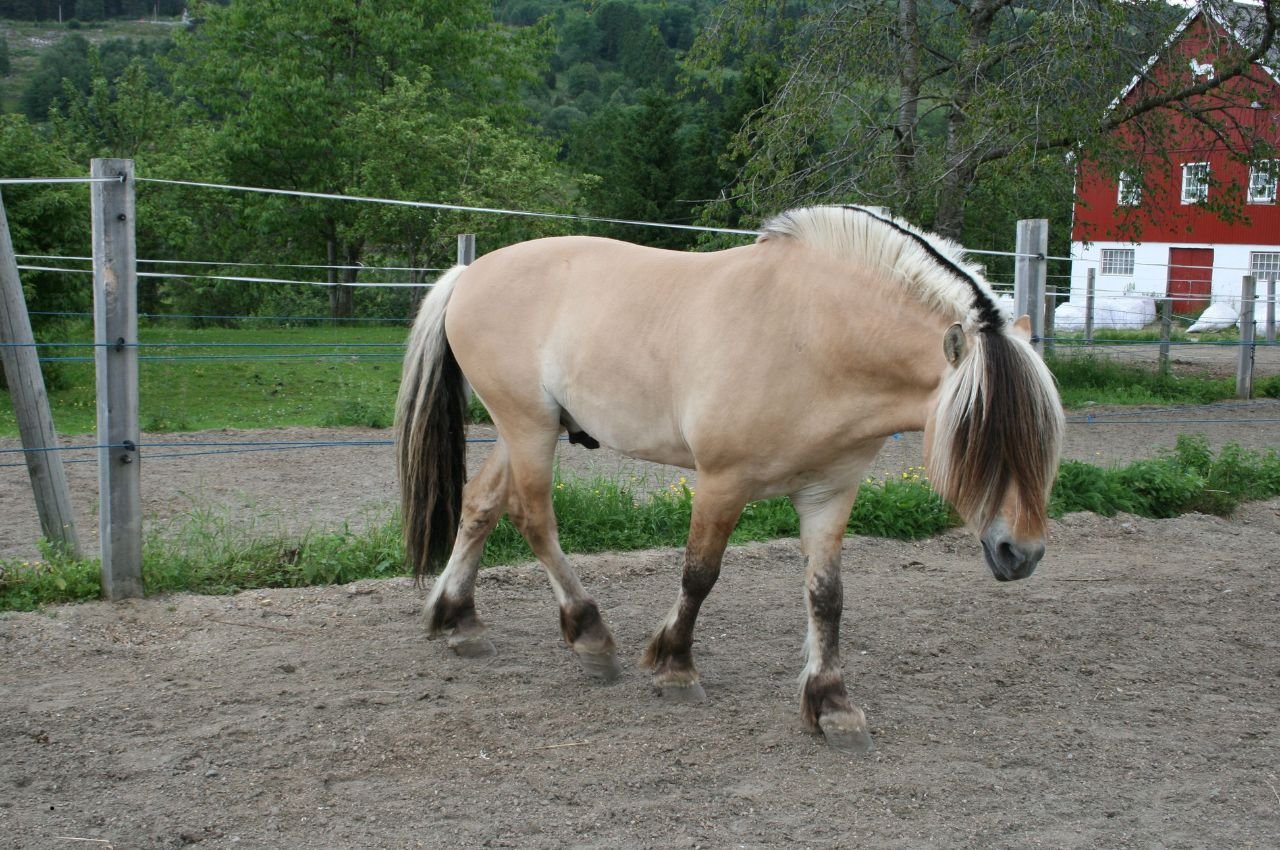Introduction
The Breton horse, originating from the rugged landscapes of Brittany in northwestern France, stands as one of Europe’s most versatile and hardy draft breeds. Known for their strength, gentle temperament, and adaptability, these magnificent horses have served various roles throughout history, from agricultural work to military service, and continue to excel in modern equestrian disciplines.
Breed History and Origins
The Breton horse’s ancestry traces back over a thousand years to the Celtic horses of ancient Brittany. Historical records suggest that these horses were influenced by various breeds brought to the region through trade and conquest, including Oriental horses introduced during the Crusades and later refinements with Norfolk Roadster, Hackney, and Percheron bloodlines.
The modern Breton breed was formally established in the 19th century when breeders began systematic selection to create distinct types suited for different purposes. The breed gained official recognition in 1909 with the establishment of the studbook, and breeding programs were further refined throughout the 20th century.
Physical Characteristics
General Appearance
Breton horses are compact, muscular draft horses that embody strength and elegance in equal measure. They typically stand between 14.3 to 16.3 hands high (58-67 inches at the withers) and weigh between 1,300 to 1,800 pounds, depending on the specific type.
Conformation
- Head: Well-proportioned with a broad forehead, intelligent eyes, and alert ears
- Neck: Strong and muscular, well-set into powerful shoulders
- Body: Deep chest, strong back, and well-rounded barrel
- Legs: Sturdy with good bone structure, clean joints, and hard hooves
- Overall build: Compact and well-balanced with excellent muscle definition
Coat Colors
Breton horses come in several attractive colors:
- Chestnut (most common, ranging from light to dark shades)
- Bay
- Roan (red roan and bay roan)
- Gray (less common)
- Black (rare)
White markings on the face and legs are acceptable and quite common in the breed.
Breed Types
The Breton breed is traditionally divided into three distinct types:
1. Trait Breton (Heavy Draft)
The largest and most powerful type, originally bred for heavy agricultural work and forestry. These horses typically stand 16-16.3 hands and are characterized by their massive build and exceptional pulling power.
2. Postier Breton (Light Draft)
A lighter, more agile type developed for postal and transportation services. Standing 14.3-15.3 hands, they combine strength with greater mobility and are popular for driving competitions.
3. Corlay Breton
The smallest type, standing 14-15 hands, originally bred in the Corlay region. These horses are prized for their hardiness and versatility, making them excellent for small-scale farming and recreational riding.
Temperament and Behavior
Breton horses are renowned for their exceptional temperament, displaying characteristics that make them ideal partners for both work and recreation:
- Gentle Nature: Known for their calm, patient demeanor
- Intelligence: Quick learners with good problem-solving abilities
- Work Ethic: Strong desire to please and excellent work attitude
- Adaptability: Able to adjust to various environments and tasks
- Social: Generally good with other horses and easy to handle
Uses and Disciplines
Traditional Uses
- Agricultural work (plowing, cultivating, harvesting)
- Forestry and logging operations
- Transportation and carriage work
- Military service (historically)
Modern Applications
- Combined driving competitions
- Dressage and showing
- Recreational riding and trail work
- Therapeutic riding programs
- Meat production (in some regions)
- Conservation grazing projects
Health Considerations
Breton horses are generally robust and healthy, but like all breeds, they can be susceptible to certain conditions:
Common Health Issues
Musculoskeletal Conditions
- Joint problems due to their heavy build and work demands
- Hoof issues if proper care is not maintained
- Back problems from improper loading or poor saddle fit
Metabolic Conditions
- Easy keepers prone to obesity if overfed
- Insulin resistance in some individuals
- Laminitis risk, especially in overweight horses
Respiratory Issues
- Dust allergies (common in draft breeds)
- Recurrent airway obstruction (heaves) in susceptible individuals
Preventive Health Care
Regular Veterinary Care
- Annual vaccinations according to regional requirements
- Dental examinations every 6-12 months
- Routine deworming based on fecal egg counts
- Regular hoof care by qualified farriers
Exercise Management
- Consistent, appropriate exercise to maintain fitness
- Gradual conditioning for increased workload
- Monitoring for signs of fatigue or lameness
Nutrition Requirements
Proper nutrition is crucial for maintaining the health and performance of Breton horses. Their dietary needs vary based on age, activity level, and body condition.
Basic Nutritional Needs
Forage Foundation
- High-quality hay or pasture should form the basis of the diet
- 1.5-2.5% of body weight in forage daily
- Timothy, orchard grass, or mixed grass hays are suitable
- Legume hays (alfalfa) should be fed with caution due to high protein and calcium content
Energy Requirements
- Maintenance: 16-20 Mcal digestible energy per day
- Light work: 20-24 Mcal digestible energy per day
- Moderate work: 24-28 Mcal digestible energy per day
- Heavy work: 28-34 Mcal digestible energy per day
Protein Needs
- Mature horses: 8-10% crude protein in total diet
- Growing horses: 12-16% crude protein
- Pregnant/lactating mares: 11-13% crude protein
Feed Management Strategies
Weight Management Given their tendency to gain weight easily, careful feed management is essential:
- Monitor body condition score regularly (target: 5-6 on a 9-point scale)
- Use a weight tape or scale to track changes
- Adjust feed quantities based on body condition and workload
- Consider using a grazing muzzle for overweight horses on pasture
Feed Types and Quantities
Concentrates
- Commercial feeds: 0.25-0.75% of body weight daily
- Oats: Traditional grain, provides energy and palatability
- Beet pulp: Excellent fiber source, helps with weight management
- Fat supplements: Rice bran or vegetable oil for additional energy
Supplements
- Salt: 1-2 ounces daily (loose salt preferred)
- Minerals: Balanced mineral supplement if forage analysis indicates deficiencies
- Vitamin E and selenium: Especially important in selenium-deficient areas
- Joint supplements: May benefit working horses
Special Feeding Considerations
Easy Keepers Many Bretons are easy keepers, requiring careful management to prevent obesity:
- Feed measured amounts rather than free-choice grain
- Use lower-energy forages when possible
- Increase exercise before increasing feed
- Consider slow-feed hay nets to extend eating time
Working Horses Horses in regular work require adjusted nutrition:
- Increase energy density gradually as work increases
- Provide adequate electrolytes during hot weather
- Ensure sufficient protein for muscle maintenance and development
- Feed smaller, more frequent meals to aid digestion
Senior Horses Older Bretons may need special attention:
- Senior feeds with easily digestible fiber
- More frequent dental care
- Possible increase in protein and fat
- Regular body condition monitoring
Breeding and Genetics
Breeding Characteristics
- Mares typically reach breeding maturity at 3-4 years
- Gestation period: approximately 11 months
- Generally fertile with good maternal instincts
- Foals are typically hardy and grow rapidly
Genetic Considerations
- Maintain breed purity through registered breeding programs
- Consider genetic diversity to avoid inbreeding
- Health testing for hereditary conditions when available
- Select breeding stock based on conformation, temperament, and performance
Care and Management
Housing Requirements
- Adequate shelter from weather extremes
- Proper ventilation to prevent respiratory issues
- Clean, dry bedding changed regularly
- Safe fencing appropriate for draft horses
Exercise and Training
- Regular, consistent exercise program
- Gradual conditioning for increased workloads
- Positive reinforcement training methods
- Early socialization and handling for young horses
Grooming and Maintenance
- Daily grooming to maintain coat and skin health
- Regular hoof picking and inspection
- Mane and tail care to prevent tangles
- Seasonal coat care adjustments
Economic Considerations
Initial Investment
- Purchase price varies widely based on age, training, and bloodlines
- Transportation costs for acquiring horses from distant locations
- Initial veterinary examinations and health certificates
Ongoing Costs
- Feed and bedding: $150-300 per month
- Veterinary care: $300-600 annually
- Farrier services: $200-400 every 6-8 weeks
- Insurance: Optional but recommended for valuable horses
Conclusion
The Breton horse represents a perfect blend of strength, versatility, and gentle temperament that has made it invaluable to humans for centuries. Whether used for traditional draft work, competitive driving, or recreational riding, these remarkable horses continue to demonstrate their worth through their reliability, intelligence, and willingness to work.
Proper care, nutrition, and management are essential for maintaining the health and performance of Breton horses. Their tendency to be easy keepers requires careful attention to weight management, while their hardy constitution makes them relatively low-maintenance compared to more delicate breeds.
For those considering adding a Breton horse to their lives, the breed offers an excellent combination of utility and companionship. With proper care and training, these horses can serve faithfully in various capacities while providing years of satisfaction to their owners.
The future of the Breton breed looks promising, with active breeding programs working to maintain the breed’s essential characteristics while adapting to modern needs. Conservation efforts ensure that this valuable genetic resource will continue to contribute to the equine world for generations to come.
References and Further Reading
- Breed Registries and Organizations:
- Institut Français du Cheval et de l’Équitation (IFCE): https://www.ifce.fr/
- French Breton Horse Association: https://www.france-genetique-breton.com/en/
- Mad Barn Equine Nutrition (Breton Guide): https://madbarn.com/breton-horse-breed-profile/
- All Breed Pedigree Database: https://www.allbreedpedigree.com/
- Equimed Breed Registries Guide: https://equimed.com/health-centers/reproductive-care/articles/horse-breed-registries
- Scientific Literature:
- Journal of Equine Veterinary Science: https://www.sciencedirect.com/journal/journal-of-equine-veterinary-science
- Animal Genetics: https://onlinelibrary.wiley.com/journal/13652052
- Livestock Science Journal: https://www.sciencedirect.com/journal/livestock-science
- Veterinary and Nutritional Resources:
- American Association of Equine Practitioners: https://aaep.org/
- American Veterinary Medical Association: https://www.avma.org/
- National Research Council Nutrient Requirements of Horses: https://nap.nationalacademies.org/
- Kentucky Equine Research: https://ker.com/
- The Horse Magazine: https://thehorse.com/
- Educational Institutions and Research Centers:
- University of Kentucky Gluck Equine Research Center: https://gluck.ca.uky.edu/
- Cornell University College of Veterinary Medicine: https://www.vet.cornell.edu/
- Colorado State University Equine Sciences: https://equinesciences.colostate.edu/
- Professional Organizations:
- International Association of Equine Nutritionists: http://www.equine-nutritionists.org/
- American Horse Council: https://horsecouncil.org/
- World Horse Welfare: https://www.worldhorsewelfare.org/
- Online Nutritional and Health Resources:
- Purina Animal Nutrition Horse Care: https://www.purinamills.com/horse-feed
- SmartPak Equine Health Library: https://www.smartpakequine.com/content/
- Horse & Hound Magazine: https://www.horseandhound.co.uk/
- Practical Horseman Magazine: https://practicalhorsemanmag.com/
- Breed-Specific Resources:
- Royal Horse Breton Profile: https://www.royal-horse.com/race/the-breton-horse/
- Wikipedia Breton Horse: https://en.wikipedia.org/wiki/Breton_horse
- International Museum of the Horse: https://kyhorsepark.com/imh/
- Feed Companies and Nutritional Guidance:
- Nutrena Horse Feed: https://www.nutrenaworld.com/
- Triple Crown Feeds: https://www.triplecrownfeed.com/
- Standlee Premium Western Forage: https://standleeforage.com/
- Veterinary Colleges and Extension Services:
- UC Davis School of Veterinary Medicine: https://www.vetmed.ucdavis.edu/
- Virginia Tech Marion duPont Scott Equine Medical Center: https://www.vetmed.vt.edu/
- Rutgers Cooperative Extension (Equine): https://njaes.rutgers.edu/
Note: This article provides general information about the Breton horse breed. Always consult with qualified veterinarians, equine nutritionists, and experienced breeders for specific advice regarding individual horses. Feed requirements and health care needs may vary based on individual circumstances, regional conditions, and local regulations.

